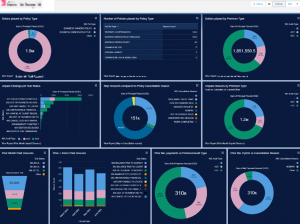Introduction
Cash flow management is one of the most crucial elements of a successful business.
Many people mistake cash flow for profit.
They are actually two separate concepts, but closely related – cash flow management deeply impacts a company’s profitability.
Cash flow refers to the difference between the money coming into your business and the money going out of it.
Basically, cash flow consists of three things:
- Accounts Receivable
- Accounts Payable
- Shortfalls
If you’ve been less than diligent about monitoring your business’s cash flow, these 11 tips can help you stay on top of it:
11. Monitor your cash flow regularly.
It is crucial to keep track of your expendables and monitor your cash flow on a regular basis. Be diligent about checking in often and as needed, whether that’s weekly, monthly or quarterly.
Keep a detailed schedule of upcoming accounts payable readily available so that you know exactly how much cash output your business regularly does.
This will enable you to spot any errors or problems early on and correct them before they become a bigger issue.
Online accounting software such as QuickBooks makes it easy to monitor your accounts and generate reports.
This is also helpful for auditing purposes – should your company get audited, you’ll have all the necessary information already on hand.
10. Cut costs where possible.
Focus on your recurring expenses and look for ways to cut costs and increase your cash flow.
Can you cut back on utilities, rent or payroll?
Are you spending money on subscriptions or services you’re not using or insurance coverage you no longer need?
Can you renegotiate the terms of outstanding loans or leases?
Figure out what you need and don’t need, and cut out whatever no longer serves your business.
9. Get a line of credit before you need one.
A business line of credit is a good way to protect your business against cash flow problems. You may be able to get a line of credit for a percentage of your accounts receivable or inventory if you use them as collateral.
Look for cards with rewards such as points you can use toward travel or business purchases.
In addition to providing a cushion for lean times, business credit cards also categorize your purchases, so it’s easier to track expenses.
8. Rent equipment instead of buying it.
By leasing business equipment like cars and computers instead of buying, you get access to the latest features and avoid tying up cash—but you still get to expense the lease costs on your business taxes.
While this may not make sense for everyone business, consider the benefits this could provide your business based on your needs.
7. Stay on top of invoicing.
Don’t wait to send invoices – send them as soon as the work’s completed or products are delivered.
Find out the specific person, job title and address to send your invoices to so they don’t get lost.
Design your invoices so they’re straightforward and easy to read, with key areas like due date, the amount due, where to send payment and payment methods highlighted.
Even if you’re on the road, try a free instant invoice creator like Square, Zoho or Quickbooks.
6. Try using mobile payment solutions.
Ensure that you’re making it as easy as possible for your customers to pay you.
If you sell products or provide services at customers’ homes or offices, get paid on the spot with mobile apps that use a smartphone or tablet to accept payment by credit and debit card.
Check out mobile payment apps like Stripe or Square.
5. Speed up payments by offering incentives.
Consider offering your customers incentives for early payments. But, remember to do the math beforehand to ensure the tradeoff is worth the loss.
There are a number of ways to create early payment incentives and gain greater control over your receivables:
- Offer discounts for early/quicker payments.
- Limit the number of customers eligible for a credit.
- Maintain a strict schedule for contacting customers about payments due.
- Consider requiring deposits on some services to ensure cash input.
4. Ask for deposits or partial payments on large orders or long-term contracts.
For example, a website developer might charge a 5% deposit upfront before beginning work on the project, then charge half the remaining amount when work begins, and the full balance upon completion.
Charging this way ensures that the company generates enough cash to finance the materials and pay the workers.
3. Set a goal and stick to it.
As mentioned above, cash flow is not equal to profits.
However, effective cash flow management steers your business towards increased profits, which is the goal of any successful company.
It is critical to understand what it takes for your business to be profitable. Try projecting a time in the future when you will be turning a profit.
It provides a goal and a vision as you move forward, creating a target that will sharpen the aim of your cash flow management activities.
2. Keep cash in reserve.
It’s important to keep cash in reserve to handle emergencies or to cover gaps in your cash flow schedule.
Keep in mind that a line of credit cannot be counted as a cash reserve on your balance sheet, but it can be utilized in a similar manner.
1. Consider getting some help.
Managing cash flow is important for any busy business owner.
Working with a trusted partner to keep track of and improve your cash flow could work out better financially for your business, as well as giving you more time to focus on other important tasks.
Hiring a collection agency to collect on unpaid accounts is one of the best ways to increase cash flow and reduce company debt.
And since collection agencies specialize in credit management, they can provide valuable advice and support.
Letting a collection agency manage debt will allow a struggling company’s employees to focus on core business activities, instead of trying to manage debt collection efforts.





